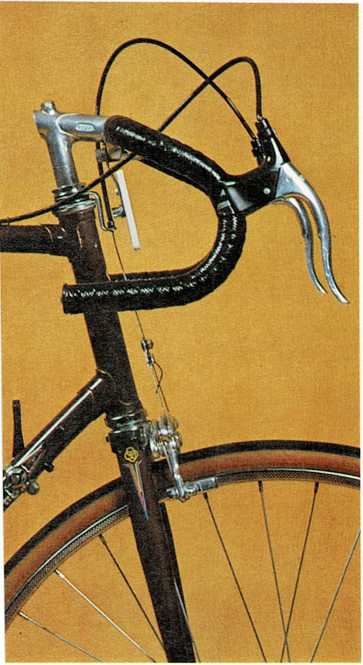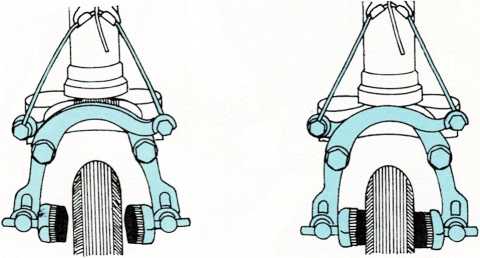
This bicycle has hand brakes—one for the front wheel and one for the
rear wheel. To stop, the rider squeezes the levers on the handle bars.
How do brakes work?
Slow down! There’s a busy street ahead. Stop your bike and wait for the
traffic light to change. Then you can cross safely.
Your bike’s brakes are there to help you stop. When you squeeze the
levers on the handlebars, the brakes rub against the wheels and slow the
bike down.
The rubbing that you use to stop is called friction
[(frihk]{.smallcaps} shuhn). Friction is what makes moving things slow
down.
If the brakes and wheels were perfectly smooth, they would slide over
each other easily, without rubbing. Your bike would keep moving.
But nothing is perfectly smooth. Even shiny, polished things are
covered with tiny rough spots. When one object slides across another,
the rough spots rub against each other. Friction—the rubbing of the
rough spots—makes things move more and more slowly, until finally they
stop. And that’s how brakes work.
When the bicycle is moving, the brake pads don’t touch the wheel (left).
But when the rider squeezes the brake handle, the pads rub against the
rim of the wheel (right). This makes the wheel stop turning.

